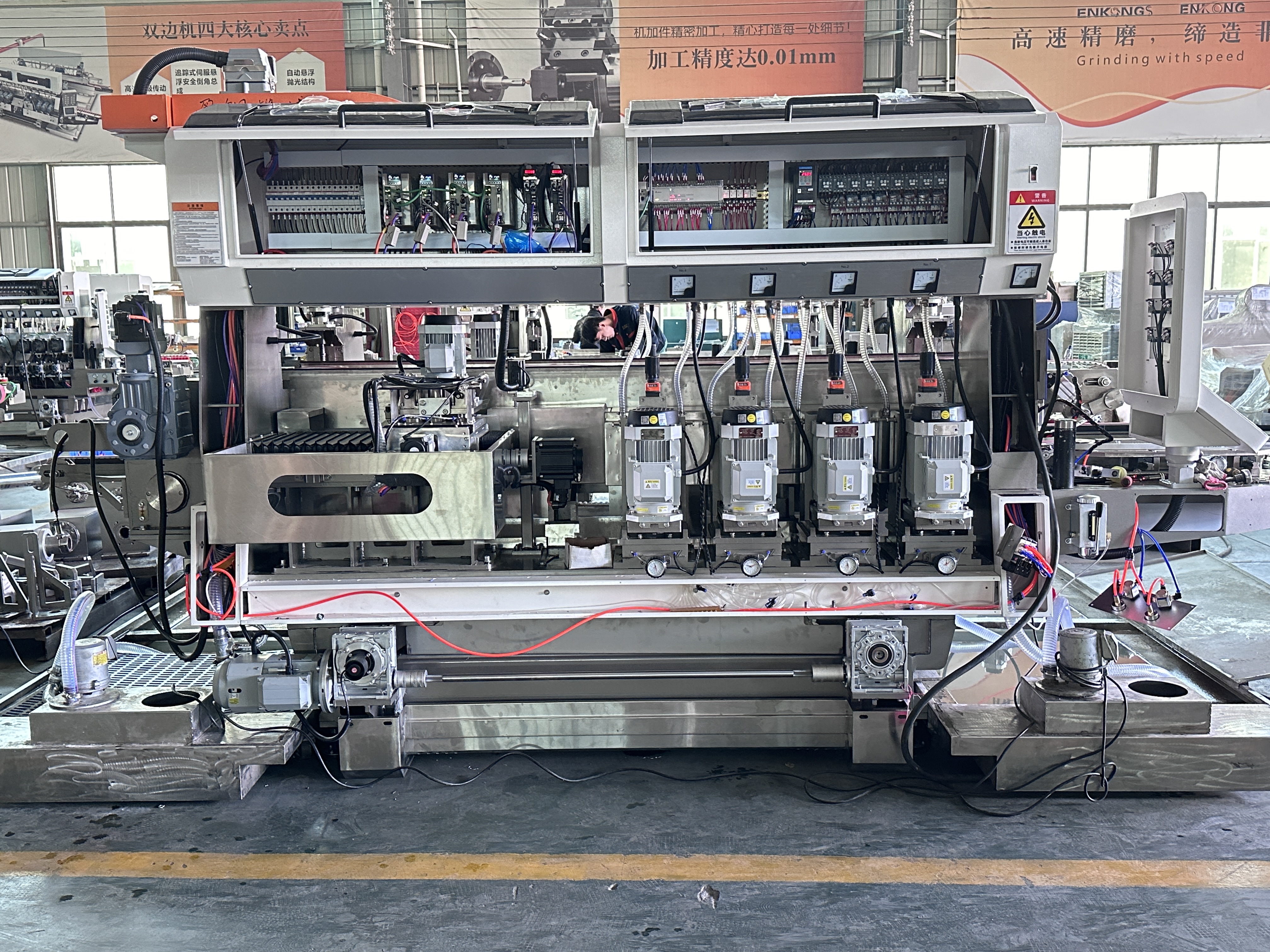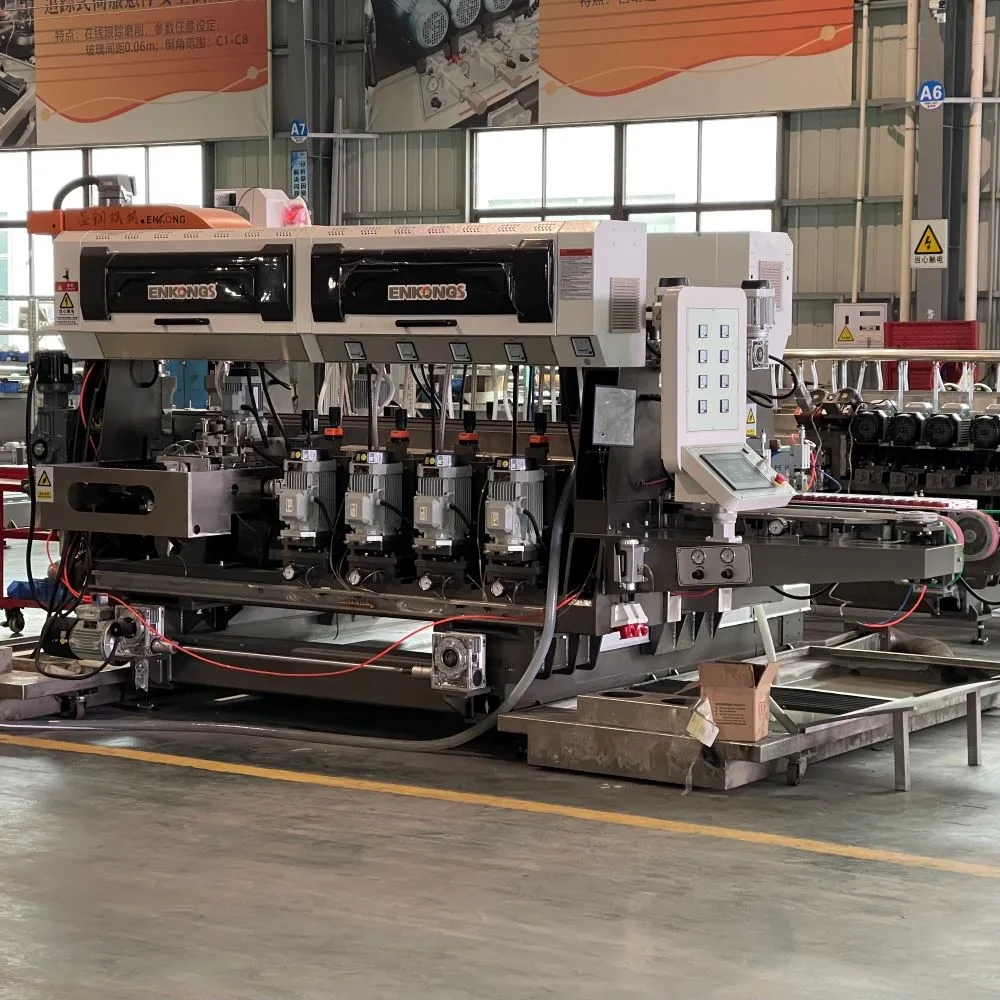The glass industry is accelerating toward a future defined by intelligent products, leaner operations, and sustainable practices. In this transformative landscape, the glass production line has emerged as a pivotal technology, seamlessly integrating with glass production lines and glass deep processing machines to deliver unmatched precision and productivity. But what distinct capabilities empower these systems to outperform conventional equipment? How do advancements in glass high-speed edging equipment address the demands of cutting-edge markets like smart homes and electric vehicles? And why are global manufacturers prioritizing this technology to maintain competitiveness?


1. The Smart Factory Evolution: Positioning Glass Double Edging Production Lines
In the age of Industry 4.0, glass production lines have evolved into dynamic, interconnected ecosystems rather than static assemblies. The glass double edging production line serves as a critical node within this network, automating one of the most resource-intensive phases: edge finishing. By simultaneously processing both edges of a glass sheet, these systems eliminate bottlenecks while leveraging data-driven insights from glass high-speed edging equipment.
Redefined Performance Benchmarks:
Unparalleled Velocity: With glass high-speed edging equipment operating at 80 meters per minute, output doubles compared to traditional single-edge systems.
Nanoscale Accuracy: Edge roughness (Ra) as low as 0.05 μm, achieved via diamond abrasive wheels and AI-guided calibration, meets stringent requirements for microelectronics and optical applications.
Energy Efficiency: Intelligent power management slashes energy consumption by 25%, aligning with sustainability mandates for modern glass production lines.
For example, a South Korean display manufacturer reduced edge-grinding energy costs by 30% after deploying a glass production line with regenerative braking—a technology adapted from electric vehicle engineering.
2. Glass Deep Processing Machines: Synergizing with Double Edging Systems
The full potential of a glass double edging production line is realized when integrated with glass deep processing machines. Downstream processes—from tempering to coating—depend on flawlessly edged glass to achieve optimal results.
Strategies for Seamless Integration:
Precision Alignment: Edges polished by glass high-speed edging equipment ensure perfect fitment during lamination, a critical step for automotive windshields.
Waste Minimization: Near-net-shape cutting via CNC machines (a subset of glass deep processing machines) reduces material waste before glass enters the glass production line.
IoT-Enhanced Workflows: Sensors embedded in glass production lines transmit real-time edge quality data to downstream tempering furnaces, dynamically adjusting temperatures to prevent stress fractures.
In the construction sector, Saint-Gobain’s smart glass division exemplifies this synergy: edges processed by glass double edging production lines are coated with photovoltaic layers using glass deep processing machines, transforming skyscraper windows into solar energy generators.
3. Glass High-Speed Edging Equipment: Breakthroughs Driving Precision and Speed
The transformative impact of the glass double edging production line hinges on advancements in glass high-speed edging equipment. These systems combine mechanical durability with digital intelligence to achieve previously unattainable speeds and precision.
Innovations Redefining Edge Processing:
Magnetic Levitation Spindles: By minimizing friction, these spindles enable glass high-speed edging equipment to sustain 12,000 RPM without thermal distortion.
Self-Optimizing Algorithms: AI models analyze historical grinding data to refine wheel paths, reducing cycle times by 15% in high-variability glass production lines.
Dry Grinding Technology: Eliminating coolant usage—a method pioneered for glass deep processing machines—reduces water consumption by 100%, ideal for arid regions.
A UAE-based processor reported a 40% increase in tool lifespan after adopting AI-enhanced glass high-speed edging equipment, crucial for machining abrasion-resistant Gorilla Glass for smartphones.
4. Industry Transformations: Sectors Leveraging Glass Double Edging Production Lines
The versatility of glass double edging production lines makes them indispensable across diverse industries. Key sectors benefiting from this technology include:
A. Automotive & Aerospace
Lightweighting: Electric vehicles like Tesla’s Cybertruck utilize ultrathin, double-edged glass processed by glass high-speed edging equipment to reduce weight without sacrificing durability.
Aerodynamic Optimization: Aircraft cabin windows edged via glass double edging production lines feature contoured profiles that minimize aerodynamic drag, enhancing fuel efficiency.
B. Consumer Electronics
Foldable Displays: Samsung’s Galaxy Fold relies on ultra-thin glass (UTG) with flawless edges, achievable only through glass high-speed edging equipment with adaptive pressure control.
AR/VR Optics: Meta’s Quest Pro headsets employ edges polished to 0.1 μm Ra, ensuring distortion-free lenses for immersive experiences.
C. Renewable Energy
Solar Panel Efficiency: Trina Solar’s latest panels use edges polished by glass double edging production lines to reduce light scattering, boosting energy output by 6%.
A Chinese EV battery manufacturer attributed its 50% throughput increase for fire-resistant separator glass to a revamped glass production line, including a glass double edging production line.
5. Addressing Challenges: Solutions for Double Edging Technology Limitations
Despite their transformative potential, glass double edging production lines face challenges requiring innovative solutions.
A. Ultra-Thin Glass Handling
Challenge: Glass sheets below 0.5 mm thickness risk warping during high-speed grinding.
Solution: Glass high-speed edging equipment now employs vacuum chucks with micro-suction zones to stabilize delicate substrates.
B. Particulate Management
Challenge: Silica dust from edging poses health risks and contaminates glass deep processing machines.
Solution: Cyclonic filtration systems integrated into glass production lines capture 99.8% of particulates, repurposing them as construction materials.
C. Cost Barriers
Challenge: High upfront costs deter small manufacturers from adopting glass double edging production lines.
Solution: Bottero’s “Edging-as-a-Service” model offers pay-per-use access to glass high-speed edging equipment, democratizing advanced technology.
6. Future Horizons: Emerging Trends in Glass Production Lines
As the industry approaches 2030, three trends will reshape glass double edging production lines:
1. Quantum Computing Integration
Quantum algorithms optimizing grinding paths could reduce processing times by 30%, revolutionizing glass high-speed edging equipment.
2. Self-Regenerating Abrasives
Nano-coated grinding wheels capable of self-healing mid-operation—under development by 3M—could extend tool life in glass production lines by 500%.
3. Hydrogen-Powered Manufacturing
Guardian Glass’s pilot projects use hydrogen-fueled glass deep processing machines and edging systems to achieve carbon-neutral production by 2035.
Is Your Facility Prepared to Lead the Glass Revolution?
The glass double edging production line is no longer optional but a cornerstone of modern glass manufacturing. By synergizing with glass high-speed edging equipment and glass deep processing machines, it addresses the trifecta of speed, precision, and sustainability.
From enabling shatterproof smartphone screens to pioneering energy-harvesting building materials, this technology is reshaping industries at an unprecedented pace. Manufacturers hesitant to adopt glass double edging production lines risk obsolescence in an increasingly competitive market. The critical question is not if but how swiftly you will integrate this transformative system into your glass production line—because in the race for glass innovation, the future is unequivocally double-edged.

